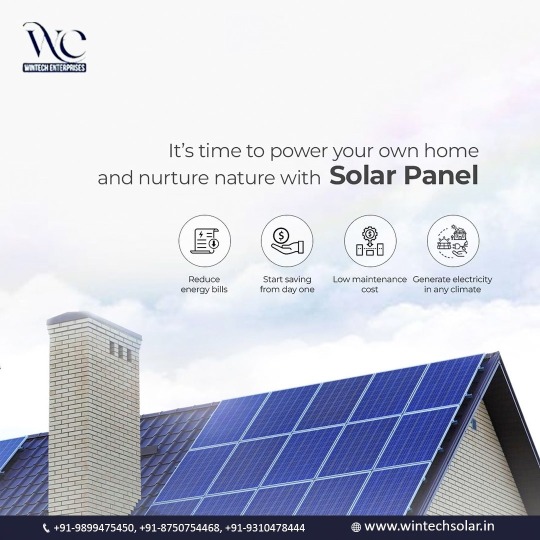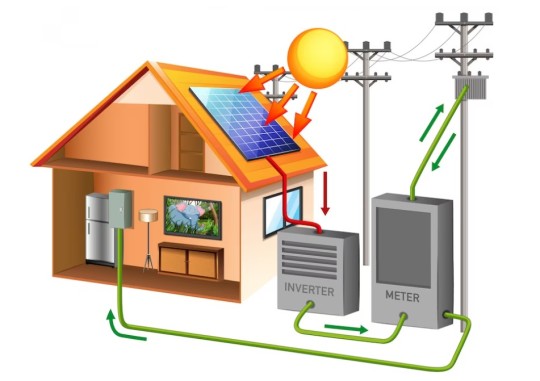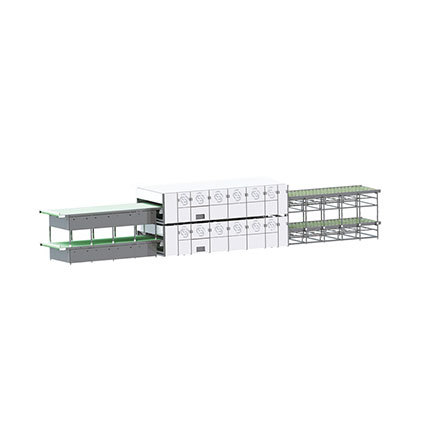#Photovoltaic Modules
Text
Thin-film Amorphous Silicon Solar Cell Market Research, Analysis, Demand, Overview and Regional Outlook Study 2017 – 2032
The market for solar photovoltaic (PV) cells based on thin layers of amorphous silicon, a non-crystalline type of silicon, is known as the thin-film amorphous silicon solar cell market. In comparison to conventional crystalline silicon sun cells, these thin-film solar cells provide benefits including flexibility, light weight, and low production costs. The demand for thin-film amorphous silicon solar cells is described in the following way:
Market Overview: In recent years, the thin-film amorphous silicon solar cell market has seen rapid expansion. The market has grown as a result of the rising demand for renewable energy, improvements in thin-film solar cell technology, and the requirement for affordable solar solutions. Applications for thin-film amorphous silicon solar cells include consumer electronics, off-grid solar systems, and building-integrated photovoltaics..
Demand Drivers:
Thin-film amorphous silicon solar cell demand would be influenced by a number of variables, such as government policies and incentives encouraging the use of solar energy, advances in thin-film technology, thin-film solar cells' cost competitiveness with other solar technologies, and the expansion of the solar energy market as a whole.
1. The switch to renewable energy: It sources has raised demand for solar photovoltaic (PV) technology due to environmental concerns and the need to minimise carbon emissions. Thin-film amorphous silicon solar cells have the ability to be produced on a big scale and at a low cost, helping to meet this need.
2. Flexible and Lightweight Design: Thin-film amorphous silicon solar cells have features that make them flexible and lightweight, making them appropriate for uses where conventional rigid solar panels are impractical. The potential applications of these cells are increased by their incorporation into curved surfaces, flexible substrates, and portable devices.
3. Cost-Effective Manufacturing: The production of thin-film amorphous silicon solar cells entails depositing amorphous silicon in thin layers on a variety of substrates, including flexible materials and glass. Thin-film technology is a cost-effective alternative since this production method enables higher throughput and cheaper material costs when compared to crystalline silicon solar cells.
4. Building-Integrated Photovoltaics (BIPV): In BIPV, solar panels are integrated into building components like windows, facades, or roofing. Thin-film amorphous silicon solar cells are frequently utilised in BIPV. Solar energy production is made possible by this integration while yet keeping the beauty of the building.
5. Off-Grid and Portable Solar Systems: Thin-film amorphous silicon solar cells are suitable for off-grid and portable solar systems due to their flexibility and light weight. These cells can be deployed in rural and distant locations. These cells can be used in remote areas, rural electrification projects, camping equipment, and charging solutions for portable electronics.
In conclusion, the demand for building-integrated photovoltaics, off-grid and portable solar systems, flexibility and lightweight thin-film technology, and cost-effective manufacturing processes all contribute to the growth of the thin-film amorphous silicon solar cell market. Thin-film amorphous silicon solar cells are anticipated to play a vital role in satisfying the growing demand for clean and sustainable power generation as solar energy continues to gather momentum.
Here are some of the key benefits:
1. Cost-Effective Solar Technology: Low-cost components and production techniques can be used to create thin-film amorphous silicon solar cells.
Thin-film amorphous silicon solar cells: can be deposited on flexible substrates, making it possible to create lightweight and flexible solar panels.
3. Low-Light Performance: Amorphous silicon solar cells operate well in dimly lit regions, making them appropriate for locations with diffuse sunlight or light shade.
4. Rapid Energy Payback: When compared to other solar technologies, thin-film amorphous silicon solar cells have a comparatively quick energy payback time, which is the amount of time it takes to produce the same amount of energy that was used during manufacture.
Referrals to our Stringent datalytics company, trade journals, and websites that focus on market reports are encouraged. These sources frequently include thorough research, market trends, growth projections, competition analysis, and other insightful information about this market.
You can investigate the availability of particular reports linked to this market by going to our website or getting in touch with us directly. We offer thorough and in-depth information that might be helpful for firms, investors, and individuals interested in this industry, but these reports frequently need to be purchased or subscribed to.
“Remember to look for recent reports to ensure you have the most current and relevant information.”
Click Here, To Get Free Sample Report: https://stringentdatalytics.com/sample-request/thin-film-amorphous-silicon-solar-cell-market/10440/
Market Segmentations:
Global Thin-film Amorphous Silicon Solar Cell Market: By Company
• Hanergy
• Sharp Thin Film
• Trony
• Nexpower
• GS Solar
• Kaneka Solartech
• Best Solar
• QS Solar
• T-Solar Global
• Solar Frontier
• Panasonic
• Bosch Solar
• United Solar
• Kaneka
• Schott Solar
Global Thin-film Amorphous Silicon Solar Cell Market: By Type
• Single Junction
• Dual-junction
• Multi-junction
Global Thin-film Amorphous Silicon Solar Cell Market: By Application
• Lamps
• Chargers
• Pest Controller
• Power Stations
• Curtain Wall
Global Thin-film Amorphous Silicon Solar Cell Market: Regional Analysis
The regional analysis of the global Thin-film Amorphous Silicon Solar Cell market provides insights into the market's performance across different regions of the world. The analysis is based on recent and future trends and includes market forecast for the prediction period. The countries covered in the regional analysis of the Thin-film Amorphous Silicon Solar Cell market report are as follows:
North America: The North America region includes the U.S., Canada, and Mexico. The U.S. is the largest market for Thin-film Amorphous Silicon Solar Cell in this region, followed by Canada and Mexico. The market growth in this region is primarily driven by the presence of key market players and the increasing demand for the product.
Europe: The Europe region includes Germany, France, U.K., Russia, Italy, Spain, Turkey, Netherlands, Switzerland, Belgium, and Rest of Europe. Germany is the largest market for Thin-film Amorphous Silicon Solar Cell in this region, followed by the U.K. and France. The market growth in this region is driven by the increasing demand for the product in the automotive and aerospace sectors.
Asia-Pacific: The Asia-Pacific region includes Singapore, Malaysia, Australia, Thailand, Indonesia, Philippines, China, Japan, India, South Korea, and Rest of Asia-Pacific. China is the largest market for Thin-film Amorphous Silicon Solar Cell in this region, followed by Japan and India. The market growth in this region is driven by the increasing adoption of the product in various end-use industries, such as automotive, aerospace, and construction.
Middle East and Africa: The Middle East and Africa region includes Saudi Arabia, U.A.E, South Africa, Egypt, Israel, and Rest of Middle East and Africa. The market growth in this region is driven by the increasing demand for the product in the aerospace and defense sectors.
South America: The South America region includes Argentina, Brazil, and Rest of South America. Brazil is the largest market for Thin-film Amorphous Silicon Solar Cell in this region, followed by Argentina. The market growth in this region is primarily driven by the increasing demand for the product in the automotive sector.
Visit Report Page for More Details: https://stringentdatalytics.com/reports/thin-film-amorphous-silicon-solar-cell-market/10440/
Reasons to Purchase Thin-film Amorphous Silicon Solar Cell Market Report::
• To obtain insights into industry trends and dynamics, including market size, growth rates, and important factors and difficulties. This study offers insightful information on these topics.
• To identify important participants and rivals: This research studies can assist companies in identifying key participants and rivals in their sector, along with their market share, business plans, and strengths and weaknesses.
• To comprehend consumer behaviour: these research studies can offer insightful information about customer behaviour, including preferences, spending patterns, and demographics.
• To assess market opportunities: These research studies can aid companies in assessing market chances, such as prospective new goods or services, fresh markets, and new trends.
In general, market research studies offer companies and organisations useful data that can aid in making decisions and maintaining competitiveness in their industry. They can offer a strong basis for decision-making, strategy formulation, and company planning.
About US:
Stringent Datalytics offers both custom and syndicated market research reports. Custom market research reports are tailored to a specific client's needs and requirements. These reports provide unique insights into a particular industry or market segment and can help businesses make informed decisions about their strategies and operations.
Syndicated market research reports, on the other hand, are pre-existing reports that are available for purchase by multiple clients. These reports are often produced on a regular basis, such as annually or quarterly, and cover a broad range of industries and market segments. Syndicated reports provide clients with insights into industry trends, market sizes, and competitive landscapes. By offering both custom and syndicated reports, Stringent Datalytics can provide clients with a range of market research solutions that can be customized to their specific needs
Contact US:
Stringent Datalytics
Contact No - +1 346 666 6655
Email Id - [email protected]
Web - https://stringentdatalytics.com/
#Thin-film Amorphous Silicon Solar Cell#Solar Energy#Photovoltaics#Renewable Energy#Solar Cell Technology#Energy Efficiency#Thin-film Solar Panels#Amorphous Silicon Technology#Alternative Energy#Solar Power Generation#Sustainable Energy#Energy Conversion#Solar Panel Efficiency#Green Technology#Solar Energy Harvesting#Clean Energy#Solar Cell Manufacturing#Solar Energy Innovation#Photovoltaic Modules#Thin-film PV#Solar Electricity.#global market report#global market insights
0 notes
Text
What are the raw materials of photovoltaic modules
Although the composition of photovoltaic power generation systems varies in materials, all components include several layers of materials from the light-facing side to the back-lighting side. Sunlight first passes through a protective layer (usually glass) and then enters the interior of the cell through a transparent contact layer. At the center of the module is an adsorbent material, a layer of material that absorbs photons to complete the "photoelectric current". Among them, the semiconductor materials depend on the specific requirements of the photovoltaic system. The raw materials of photovoltaic modules are composed of eight main materials and auxiliary materials for production.
1. Cell: A solar cell is a device that converts light energy directly into electrical energy. It is made of semiconductor material. Through the irradiation of sunlight, the electron-hole pairs are excited, and the electrostatic field in the PN junction barrier region is used to separate the electron-hole pairs. The separated electrons and holes are collected and exported to the outside of the battery through the electrodes to form a current. .
2. Tin-coated copper strip: It is cut and straightened by oxygen-free copper, and all outer surfaces have hot-dip coating. Tin-coated strips are used to lead out the electrodes of solar cells and connect cells during the production of solar photovoltaic modules. High welding operability, firmness and flexibility are required.
3. EVA: A copolymer of ethylene and vinyl acetate, a hot-melt adhesive. It is used to encapsulate the battery, prevent the external environment from affecting the electrical performance of the battery, enhance the light transmittance of the photovoltaic module, and bond the battery, tempered glass, and backplane together to have a certain bonding strength. The electrical performance output of the component has a gain effect.
4. Back sheet: used as back protection packaging material, commonly used is divided into T door, TPE and PET, polyethylene structure. It is used to enhance the aging resistance and corrosion resistance of photovoltaic modules, prolonging the service life of photovoltaic modules; High infrared emissivity, can also reduce the operating temperature of photovoltaic modules; at the same time improve the insulation performance of photovoltaic modules.
5. Tempered glass: It is used to support the structure of photovoltaic modules, enhance the load-bearing and load of photovoltaic modules, and has the functions of light transmission, anti-reflection light transmission, water resistance, gas resistance and corrosion resistance.
6. Aluminum frame: The aluminum alloy frame installed on the glass extension can protect the edge of the glass, strengthen the sealing performance of the photovoltaic module and improve the overall mechanical strength of the photovoltaic module, which is convenient for the installation and transportation of the photovoltaic module.
7. Silica gel: used for bonding and sealing laminated glass photovoltaic modules, bonding junction boxes and backplanes, and enhancing the UV resistance of photovoltaic modules.
8. Junction box: The electrical connection device of photovoltaic modules, which can seal and waterproof the lead-out wires of photovoltaic modules and protect the safety of photovoltaic module systems during operation.
As a terminal product of the photovoltaic industry, photovoltaic modules are closely integrated with the market. The products will be directly oriented to customers. There are many kinds of raw materials used. The selection of different photovoltaic materials will directly affect the relevant performance of the modules. In addition, encapsulation can avoid battery fragmentation and facilitate outdoor installation. The quality of encapsulation determines the service life and reliability of solar cell components.
0 notes
Text
bi shot solar panel mounting bracket clamps mold
China multi shot mold maker, offer dual injection solar module drainage buckle, two tone photovoltaic drainage clamp mold, multi material solar panel buckle mold
#2k solar module drainage buckle mold#multi shot photovoltaic drainage clamp mold#pp tpr solar panel buckle mold#china mold#2 component mold#bi material mold#two color mold
0 notes
Text
Looking for a Reliable Solar Panel Supplier?
Are you in need of a trustworthy and experienced solar panel supplier? Look no further! We provide top-tier solar panels that are efficient, durable, and eco-friendly. Whether you're a homeowner, business owner, or contractor, we have the right solar solutions for you. Start harnessing the power of the sun today and join the green energy revolution.
Contact Information:
Address-
S 65 Site II Loni Road, Mohan Nagar Ghaziabad,
Uttar Pradesh -201006
Phone: +91 8750754478
+91 9899475450
Email: [email protected]
Website: https://wintechsolar.in/solar-panel.php

0 notes
Text
Haus Pv Anlage Installiere - Die Sonnen Techniker

Planung der Haus-PV-Anlage:
Die Installation einer Haus-PV-Anlage erfordert sorgfältige Planung. Zuerst muss die geeignete Größe der Anlage ermittelt werden, basierend auf dem Energiebedarf des Haushalts. Eine genaue Standortanalyse ist ebenfalls unerlässlich, um den besten Ort für die Solarpaneele zu finden, der maximale Sonneneinstrahlung gewährleistet.
Installation der Solarpaneele:
Die eigentliche Installation der Solarpaneele ist ein wichtiger Schritt. Fachleute montieren die Paneele auf dem Dach oder an anderen geeigneten Standorten. Die Ausrichtung und Neigung der Paneele müssen optimal eingestellt werden, um die Sonnenenergie bestmöglich zu nutzen. Alle Verkabelungen und elektrischen Komponenten werden sorgfältig angeschlossen, um eine sichere und effiziente Energieerzeugung zu gewährleisten.
Inbetriebnahme und Wartung:
Nach der Installation erfolgt die Inbetriebnahme der PV-Anlage. Hierbei werden alle Systeme getestet, um sicherzustellen, dass sie einwandfrei funktionieren. Regelmäßige Wartung ist entscheidend, um die Effizienz der Anlage aufrechtzuerhalten und eventuelle Probleme frühzeitig zu erkennen. Die Überwachung der Energieproduktion und gegebenenfalls die Anpassung der Anlage sind ebenfalls Teil der langfristigen Pflege einer Haus-PV-Anlage.
#photovoltaik anlage kosten#Photovoltaics Dülmen#Buy PV module Dülmen#photovoltaik elektriker dülmen
0 notes
Text
Introducing the XP-MH60H-600W-615W: Highly Efficient PERC Solar Panels
Introduction:
In the quest for clean and sustainable energy, solar power has emerged as a leading alternative. Solar panels are an essential component of any solar energy system, and today we introduce the XP-MH60H-600W-615W, a remarkable solar panel that exemplifies efficiency and power output. This blog post will delve into the features and benefits of this product.
Efficiency and Power Output:
The XP-MH60H-600W-615W solar panel boasts an impressive power output range of 600W-615W, making it ideal for both residential and commercial installations. With dimensions of 2172130330mm, it strikes the perfect balance between size and performance.
One of the key factors contributing to its exceptional performance is the utilization of high-efficiency half-cell PERC technology. By dividing the solar cell into two halves, the current flowing through each half is reduced, effectively minimizing internal losses. This innovative design allows the XP-MH60H-600W-615W to achieve higher power output and maximize energy generation from sunlight.
Reliability and Longevity:
When investing in solar panels, longevity and quality assurance are of utmost importance. The XP-MH60H-600W-615W offers a 15-year product quality and craftsmanship warranty, ensuring the durability and reliability of the panels. Additionally, the linear power warranty extends up to 25 years, providing peace of mind and consistent performance over the long term.
Anhui Sunlight PERC Technology:
The XP-MH60H-600W-615W incorporates Anhui Sunlight's cutting-edge PERC (Passivated Emitter Rear Contact) technology. This advanced manufacturing process enhances the efficiency of the solar cells by passivating the rear surface, reducing electron recombination, and increasing overall power output. This means that even under challenging conditions, such as low light or high temperatures, these panels can still maintain optimal performance.
Environmental Benefits:
By harnessing solar energy, the XP-MH60H-600W-615W plays a vital role in reducing carbon emissions and combating climate change. The clean and renewable energy generated by these panels helps to mitigate environmental impact while providing a sustainable and consistent power source.
Conclusion:
The XP-MH60H-600W-615W stands as a testament to technological advancements in the solar energy industry. Its high efficiency, impressive power output, and long-term reliability make it an excellent choice for individuals and businesses seeking to adopt renewable energy solutions. With its cutting-edge PERC technology and Anhui Sunlight's expertise, this solar panel sets new standards for performance and sustainability. Invest in the XP-MH60H-600W-615W and embrace a greener future.

0 notes
Photo

Winds of change blew through the East, stirring up a strange and mysterious effect. Global polysilicon prices had suddenly dropped, while China polysilicon prices had risen just as quickly. There was no waiting for the dust to settle, for news seemed to spread with a speed that defied all explanation. Was some otherworldly force behind it, or was it merely the workings of a more mundane nature? Whatever the cause, the result was undeniable and had the people of the region asking questions they had no way of answering. Such was the power of the unknown.
#Markets#Markets & Policy#Modules & Upstream Manufacturing#Opinion & Analysis#ingots#photovoltaic#photovoltaics#polysilicon#PV#PV modules#PV plant#silicon#Solar#solar cell#Solar Cells#solar energy#solar modules#solar panels#Solar Power#Solar PV#Solar wafers#Technology#wafers#fault#global#Chinese#demand#manipulation
0 notes
Text
Wintech Solar: Illuminating Street Light Manufacturer in Delhi with Sustainable Brilliance
In the bustling city of Delhi, where life never truly sleeps, the importance of efficient and reliable street lighting cannot be overstated. A well-lit street not only ensures the safety and security of its inhabitants but also adds to the Street Light Manufacturer in Delhi vibrant and dynamic essence of the metropolis. Among the pioneers of this crucial urban transformation is Wintech Solar, a leading street light manufacturer that has been at the forefront of revolutionizing Delhi's lighting landscape. Wintech Solar has earned a stellar reputation for its commitment to sustainability and cutting-edge technology. As a key player in the solar energy industry, they have seamlessly integrated renewable energy solutions with contemporary design to create highly efficient and eco-friendly street lighting systems. With a wide range of products catering to various urban needs, the company has become the go-to choice for municipal corporations and private entities alike.

#Street Light Manufacturer in Delhi#Solar Photovoltaic Module#Street light manufacturer in india#Aluminium busbar manufacturer#MS Pole Manufacturer
0 notes
Text
Double-layer & Single-chamber Solar Panel Laminator
Overview
Double-layer & single-chamber PV module laminator has a double layer, loading stage, one heating laminating stage, and unloading stage.
Equipment Configuration and Features of Double-layer & Single-chamber solar module laminator
Control System
Adopt Siemens PLC control system
It integrates automatic/semi-automatic/ manual three control modes. Fully automatic and manual loading, laminating, unloading switchable.
Recording function of important system parameter characteristic curve (upper and lower vacuum degrees, table temperature).
Segmented pressurization function, pressure speed adjustable.
Adopt chain transmission structure for conveyor system, continuously loading/unloading of modules.
The programmable controller can easily communicate with the computer and meet the requirements of modern industrial automation control.
Loading and unloading stages are equipped with independent control buttons for easy loading and unloading; The loading platform is designed to be a step-by-step control mode, which can set a certain forward distance according to actual needs. That means, that each time the button is clicked, the modules go forward a certain distance automatically.
Process parameters can be set, and various process parameters can be displayed in the same window. It can store a variety of process recipes for product selection.
Automatically remembered process parameters that will not be lost after rebooting. Lamination count statistics function, which is easy to check the working times and production per shift, can also be used as a reference for equipment repair, maintenance and vulnerable parts replacement cycles.
For more information about solar laminator price and buy solar panel laminating machine, please feel free to contact us!

1 note
·
View note
Photo

Invisible Solar
Invisible Solar is a new PV technology that take on the appearance of any building material. Each Invisible Solar module is more than a photovoltaic panel, it also is an active architectural element with various functionality.
Disguising solar panels as ancient Roman tiles in Pompeii

"They look exactly like the terracotta tiles used by the Romans, but they produce the electricity that we need to light the frescoes," says Gabriel Zuchtriegel, Director of the Archaeological Park of Pompeii. This solution is part of a more comprehensive strategy to turn costs into savings opportunities and to embrace sustainable development.
Technically called "traditional PV tiles", the invisible solar panels used in Pompeii come from Camisano Vicentino, a little Italian town with slightly more than 10 000 inhabitants, halfway between Padua and Vicenza. They were created and patented by the family business Dyaqua.

How They Work

Operating of Invisible Solar modules is based on the low molecular density. Each module is composed of a non-toxic and recyclable polymeric compound we properly developed to encourage the photon absorption.
Inside the module there are incorporated standard monocrystalline silicon cells. The surface, that is opaque at the sight but translucent to sun rays, allows the light to enter and feed the cells.

Oh my goodness.
Solar voltaic’s designed for historic contexts that offers architectural and aesthetic integration?
AND they are already installed in Pompeii and not marketing vapourware?
AND they are made by a small Italian family business?
Be still my beating solarpunk heart 🥰 ☀️
via @stml in a forum.
#solarpunk#solar punk#solar power#voltaics#solar panels#terracotta#pompeii#renewables#solar energy#Aesthetic#Architecture
3K notes
·
View notes
Text
Solar Polysilicon Ingot Wafer Cell Module Market Research, Overview, Analysis, and Regional Outlook Study 2017 – 2032
The market for solar photovoltaic (PV) modules, which are made up of polysilicon ingots, wafers, and cells and used to produce energy from sunshine, is known as the solar polysilicon ingot wafer cell module market. The main component of polysilicon used in the production of solar cells is grown into ingots, cut into wafers, assembled into solar cells, and finally combined into modules. The market for solar polysilicon ingot wafer cell modules, including its demand, is described here in general terms:
Market overview: The desire for clean and renewable energy sources has led to a tremendous increase in the market for solar polysilicon ingot wafer cell modules in recent years. One of the most extensively used renewable energy technologies worldwide is solar photovoltaic (PV) technology. Solar PV systems require polysilicon ingots, wafers, cells, and modules in order to function properly and sustainably provide power.
The market for solar polysilicon ingot wafer cell modules was valued at USD 5,643.1 million in 2020 and is anticipated to grow at a CAGR of 7.6% from 2030 to 2028 to reach USD 10,057.4 million.
Demand Drivers:
1. Growing Adoption of Renewable Energy: As a result of growing environmental awareness and government initiatives to support clean energy, solar PV modules are in higher demand globally. A major strategy to address climate change and lessen reliance on fossil fuels is solar electricity.
2. Reducing Costs of Solar PV Modules: Solar energy is now more competitive and more inexpensive thanks to improvements in manufacturing techniques and economies of scale. Solar power is becoming a feasible option for both utility-scale and distributed generation projects as a result of the rise in demand for solar polysilicon ingot wafer cell modules.
3. Government Incentives and Subsidies: To promote the installation of solar PV, many nations have put supportive laws, incentives, and subsidies in place. These initiatives, such as feed-in tariffs, tax credits, and renewable energy targets, have contributed to the increased demand for solar polysilicon ingot wafer cell modules.
4. Sustainable Development Goals: The adoption of solar PV technology has been accelerated by the United Nations Sustainable Development Goals (SDGs), particularly SDG 7 (Affordable and Clean Energy). To ensure that everyone has access to clean and affordable energy, polysilicon ingots, wafers, cells, and modules are used in solar energy systems.
5. Technological Advancements: The performance and dependability of solar polysilicon ingot wafer cell modules have been improved by ongoing developments in solar PV technology, including increases in cell efficiency, module design, and production methods. The need for solar PV systems has grown even more as a result of these technological advancements.
In conclusion, the market for solar polysilicon ingot wafer cell modules is seeing strong demand as a result of rising interest in renewable energy sources, falling solar PV module prices, financial incentives from the government, and international sustainability objectives. The global shift to a clean and sustainable energy future will be aided by the rising demand for high-quality polysilicon ingots, wafers, cells, and modules as solar PV technology develops.
Here are some of the key benefits:
Renewable Energy Generation
Reduced Carbon Footprint
Energy Independence
Diversified Energy Portfolio
Job Creation and Economic Growth
Technology Advancement and Innovation
Resilience to Energy Price Volatility
Grid Stabilization and Energy Distribution
Environmental Conservation
Sustainable Development
Referrals to our Stringent datalytics company, trade journals, and websites that focus on market reports are encouraged. These sources frequently include thorough research, market trends, growth projections, competition analysis, and other insightful information about this market.
You can investigate the availability of particular reports linked to this market by going to our website or getting in touch with us directly. We offer thorough and in-depth information that might be helpful for businesses, investors, and individuals interested in this industry, but these reports frequently need a purchase or membership.
“Remember to look for recent reports to ensure you have the most current and relevant information.”
Click Here, To Get Free Sample Report: https://stringentdatalytics.com/sample-request/solar-polysilicon-ingot-wafer-cell-module-market/10439/
Market Segmentations:
Global Solar Polysilicon Ingot Wafer Cell Module Market: By Company
• GCL
• LDK
• Hanwha Solar
• Suntech
• Renesola
• JA Solar
• Yingli Solar
• Sino-Si
• Daqo New Eenergy
• Trina Solar
• CSI Solar
• Hanwha Solar
Global Solar Polysilicon Ingot Wafer Cell Module Market: By Type
• Series Connection
• Parallel Connection
Global Solar Polysilicon Ingot Wafer Cell Module Market: By Application
• Solar Power Station
• Civilian Solar Small Equipment
• Other
Global Solar Polysilicon Ingot Wafer Cell Module Market: Regional Analysis
The regional analysis of the global Solar Polysilicon Ingot Wafer Cell Module market provides insights into the market's performance across different regions of the world. The analysis is based on recent and future trends and includes market forecast for the prediction period. The countries covered in the regional analysis of the Solar Polysilicon Ingot Wafer Cell Module market report are as follows:
North America: The North America region includes the U.S., Canada, and Mexico. The U.S. is the largest market for Solar Polysilicon Ingot Wafer Cell Module in this region, followed by Canada and Mexico. The market growth in this region is primarily driven by the presence of key market players and the increasing demand for the product.
Europe: The Europe region includes Germany, France, U.K., Russia, Italy, Spain, Turkey, Netherlands, Switzerland, Belgium, and Rest of Europe. Germany is the largest market for Solar Polysilicon Ingot Wafer Cell Module in this region, followed by the U.K. and France. The market growth in this region is driven by the increasing demand for the product in the automotive and aerospace sectors.
Asia-Pacific: The Asia-Pacific region includes Singapore, Malaysia, Australia, Thailand, Indonesia, Philippines, China, Japan, India, South Korea, and Rest of Asia-Pacific. China is the largest market for Solar Polysilicon Ingot Wafer Cell Module in this region, followed by Japan and India. The market growth in this region is driven by the increasing adoption of the product in various end-use industries, such as automotive, aerospace, and construction.
Middle East and Africa: The Middle East and Africa region includes Saudi Arabia, U.A.E, South Africa, Egypt, Israel, and Rest of Middle East and Africa. The market growth in this region is driven by the increasing demand for the product in the aerospace and defense sectors.
South America: The South America region includes Argentina, Brazil, and Rest of South America. Brazil is the largest market for Solar Polysilicon Ingot Wafer Cell Module in this region, followed by Argentina. The market growth in this region is primarily driven by the increasing demand for the product in the automotive sector.
Visit Report Page for More Details: https://stringentdatalytics.com/reports/solar-polysilicon-ingot-wafer-cell-module-market/10439/
Reasons to Purchase Solar Polysilicon Ingot Wafer Cell Module Market Report:
• To obtain insights into industry trends and dynamics, including market size, growth rates, and important factors and difficulties. This study offers insightful information on these topics.
• To identify important participants and rivals: This research studies can assist companies in identifying key participants and rivals in their sector, along with their market share, business plans, and strengths and weaknesses.
• To better understand consumer behaviour: These studies can provide informative data on consumer preferences, purchasing habits, and demographics.
• To identify market opportunities: These studies can help businesses identify potential new products or services, untapped markets, and emerging trends.
Market research studies typically provide businesses and organisations with important information that can help with decision-making and preserving competitiveness in their industry. They can serve as a solid foundation for making decisions, developing strategies, and planning businesses.
About US:
Stringent Datalytics offers both custom and syndicated market research reports. Custom market research reports are tailored to a specific client's needs and requirements. These reports provide unique insights into a particular industry or market segment and can help businesses make informed decisions about their strategies and operations.
Syndicated market research reports, on the other hand, are pre-existing reports that are available for purchase by multiple clients. These reports are often produced on a regular basis, such as annually or quarterly, and cover a broad range of industries and market segments. Syndicated reports provide clients with insights into industry trends, market sizes, and competitive landscapes. By offering both custom and syndicated reports, Stringent Datalytics can provide clients with a range of market research solutions that can be customized to their specific needs
Contact US:
Stringent Datalytics
Contact No - +1 346 666 6655
Email Id - [email protected]
Web - https://stringentdatalytics.com/
#Solar Polysilicon#Solar Ingot#Solar Wafer#Solar Cell#Solar Module#Photovoltaics#Polysilicon Production#Solar Energy#Renewable Energy#Solar Power#Solar Industry#Solar Manufacturing#Silicon Ingot#Silicon Wafer#Solar Technology#Solar Panel#Solar Efficiency#Clean Energy#Solar PV#Energy Conversion#Solar Module Manufacturing#Solar Market Trends.
0 notes
Text
Detection methods for three problems of photovoltaic modules
Photovoltaic modules are the core components of photovoltaic power generation. In order for the photovoltaic power station to operate normally, it is necessary to inspect and maintain the components and components of the photovoltaic power station.
Common problems with photovoltaic modules are: hot spots, cracks and power degradation. Because these quality problems are hidden inside the panels, or occur after the photovoltaic power station has been in operation for a period of time, it is difficult to identify the panels when they enter the site for acceptance. Professional equipment is required for photovoltaic module testing.
1. Causes of the formation of hot spots and detection methods of photovoltaic modules
Photovoltaic module hot spot refers to the fact that under the sunlight, some cells are blocked and cannot work, so that the temperature of the covered part is much larger than that of the uncovered part, resulting in dark spots that burn out due to excessive temperature.
The formation of hot spots in photovoltaic modules is mainly composed of two internal factors, namely internal resistance and dark current of the cell itself.
Hot spot detection can be performed with an infrared thermal imager, which can use thermal imaging technology to display the temperature and distribution of the measured target with a visible heat map.
2. Causes of crack formation and detection methods of photovoltaic modules
Hidden cracks refer to the appearance of small cracks in the cells. Hidden cracks in the cells will accelerate the power attenuation of the cells and affect the normal service life of the modules. At the same time, the crack of the cell will expand under the mechanical load, which may lead to open circuit damage. Cracks can also cause hot spot effects.
The occurrence of cracks is caused by the combined action of various factors. The uneven force on the components, or the violent shaking during transportation and reverse transportation may cause the battery cells to crack.
Photovoltaic modules will be tested by EL imaging before leaving the factory, and the instrument used is an EL detector. The EL detector can detect whether there are abnormal phenomena such as cracks, fragments, virtual welding, and broken grids in photovoltaic cell modules.
3. Power attenuation classification and photovoltaic module detection method
The power attenuation of photovoltaic modules refers to the phenomenon that the output power of the modules gradually decreases with the increase of the illumination time. The power attenuation of photovoltaic modules can be roughly divided into three categories: module power attenuation caused by destructive factors; initial light-induced attenuation of modules; aging attenuation of modules.
Among them, the first category is the controllable attenuation during the installation of photovoltaic modules. For example, strengthening photovoltaic module unloading, reverse transportation, and installation quality control can reduce the probability of module cell cracking and fragmentation.
The second and third categories are process problems that need to be solved urgently in the production process of photovoltaic modules. Photovoltaic module power attenuation test can be completed by photovoltaic module I-V characteristic curve tester.
Wuxi Fgnex Technology Co., Ltd. is a company invested by MY SOLAR, which is a photovoltaic module factory founded in 2005 in Wuxi, Jiangsu. Our company is a professional solar photovoltaic module manufacturer. We believe that advanced technology and high-quality products can meet the different needs of customers. If you are interested in solar photovoltaic modules, don’t hesitate to contact with us.
0 notes
Text
bi material photovoltaic modules mold
China dual color mold maker, offer two shot solar panel clamp mold, bi material photovoltaic modules mold, double colour photovoltaic grounding buckle mold
#2k solar panel clamp mold#multi shot photovoltaic modules mold#rotary mold photovoltaic grounding buckle mold#china mold#2 component mold#bi material mold#two color mold
0 notes
Text
Solar panel supplier| Solar photovoltaic module
Wintech Solar is a well-known name for a solar panel supplier. If you want to buy a Solar photovoltaic module in a wide range contact us we are the dealer of the best solar panel supplier.
0 notes
Text

Study unlocks nanoscale secrets for designing next-generation solar cells
The work will help researchers tune surface properties of perovskites, a promising alternative and supplement to silicon, for more efficient photovoltaics.
Perovskites, a broad class of compounds with a particular kind of crystal structure, have long been seen as a promising alternative or supplement to today’s silicon or cadmium telluride solar panels. They could be far more lightweight and inexpensive, and could be coated onto virtually any substrate, including paper or flexible plastic that could be rolled up for easy transport.
In their efficiency at converting sunlight to electricity, perovskites are becoming comparable to silicon, whose manufacture still requires long, complex, and energy-intensive processes. One big remaining drawback is longevity: They tend to break down in a matter of months to years, while silicon solar panels can last more than two decades. And their efficiency over large module areas still lags behind silicon. Now, a team of researchers at MIT and several other institutions has revealed ways to optimize efficiency and better control degradation, by engineering the nanoscale structure of perovskite devices.
Read more.
29 notes
·
View notes